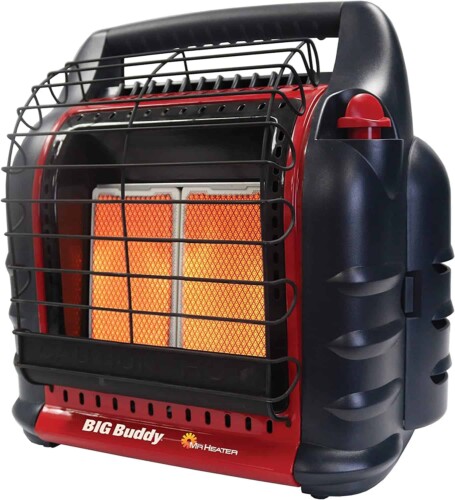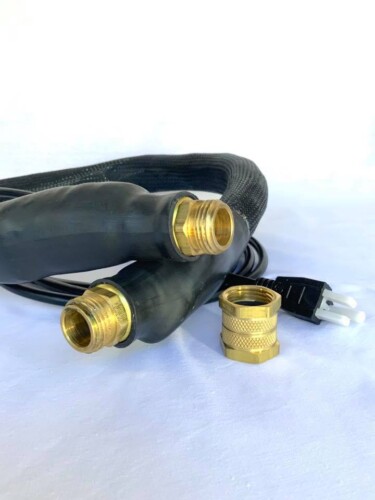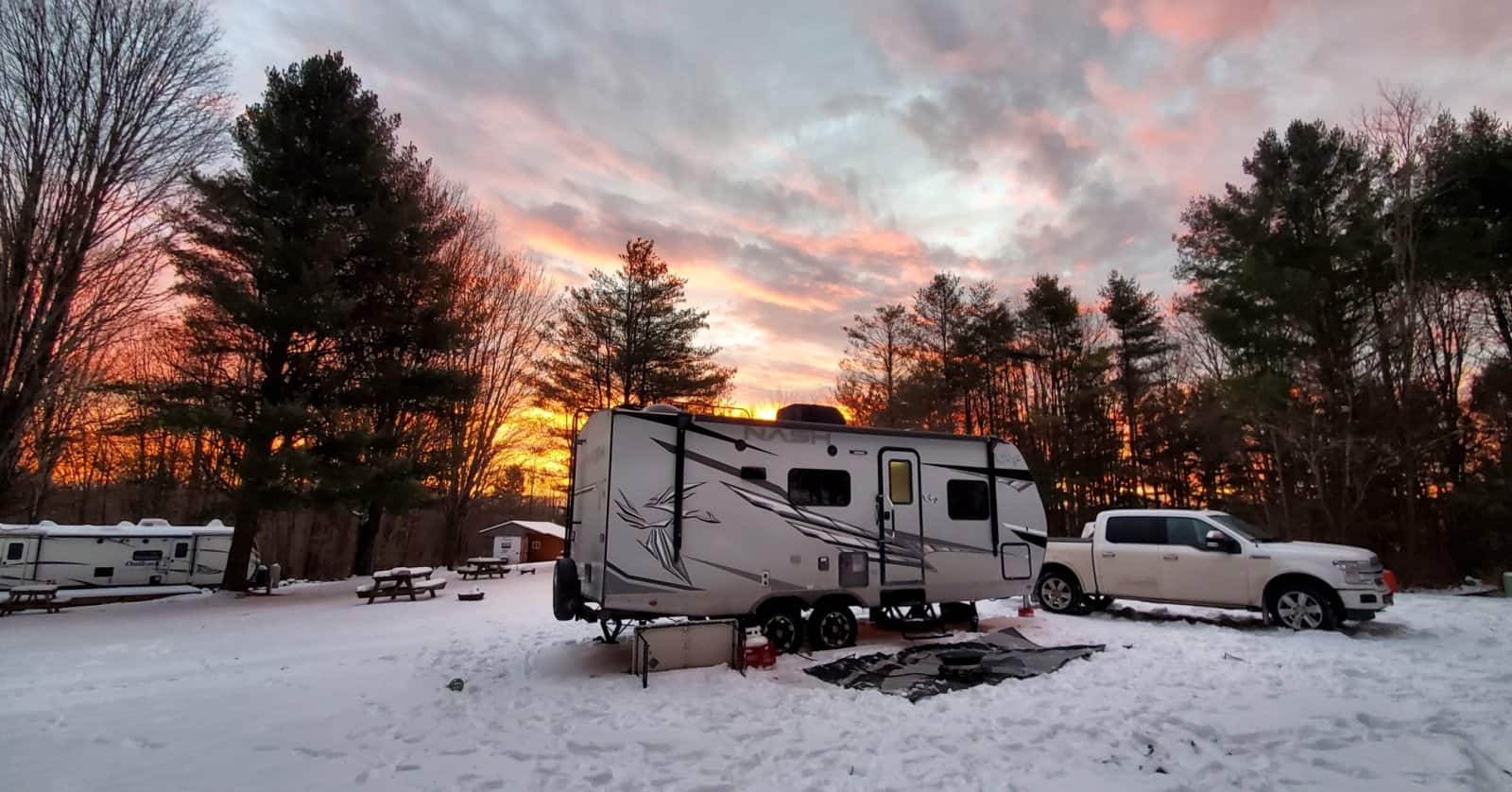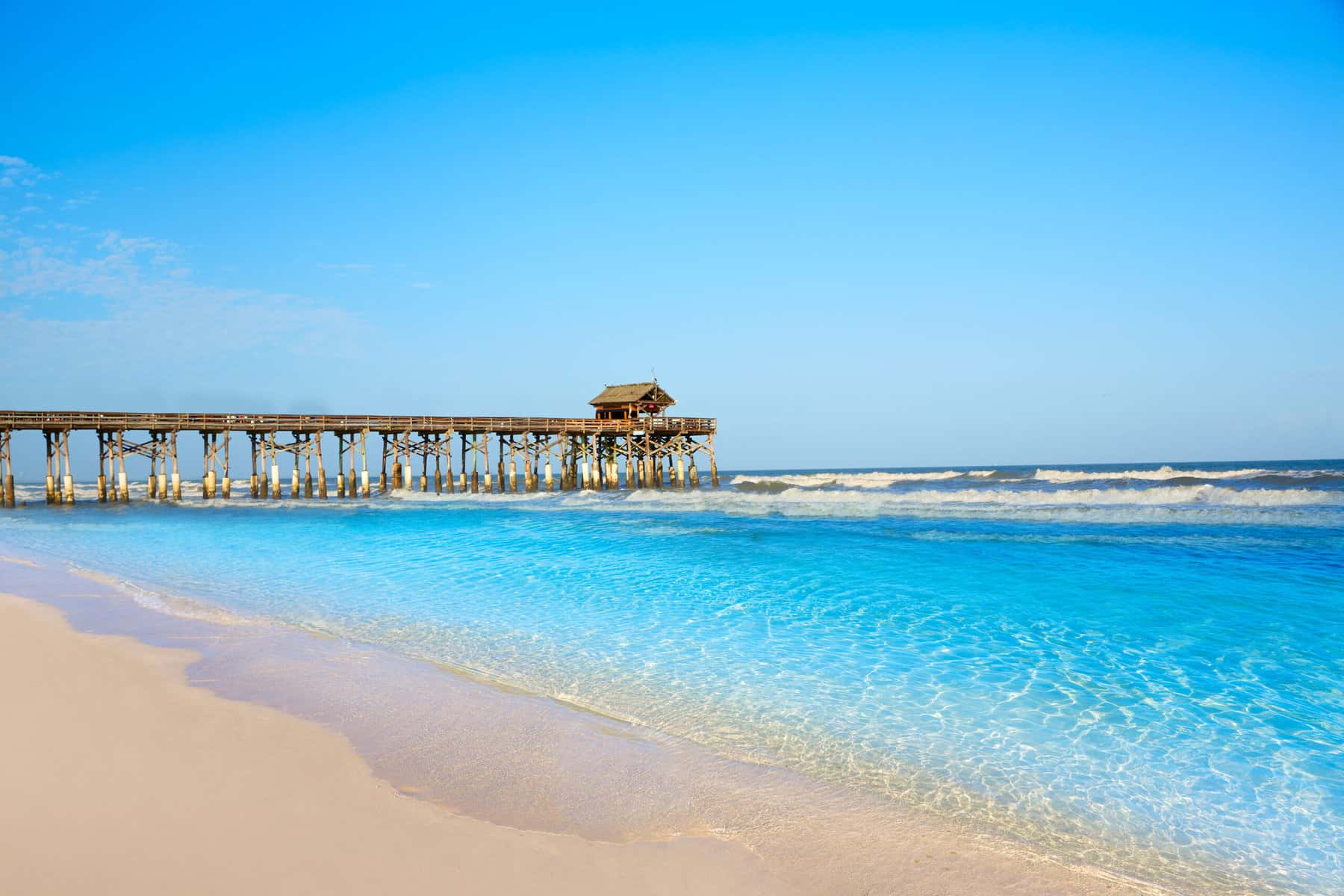After a long, hot summer, the first cold front of the season will arrive before you know it. These 5 winter RV camping must haves will help you be ready for the drop in temperature during any fall adventure.
Staying Comfy Starts with these Winter RV Camping Must-Haves
From nice-to-have to must-have, you have several options to keep cold out of your RV in winter. And there are plenty of free ways to stay warm in an RV without electricity too!
RV Skirting
You might have seen foam insulation boards around the perimeter of a stationary trailer or motorhome. If you are parked all winter, underbelly insulation layers are one of the biggest essentials to protect your RV underbelly from freezing temperatures that damage RV pipes. RV skirting also improves the heating efficiency of your RV furnace, can help keep rodents away from wiring or form nests.
Loads has been written about DIY winter RV skirts, such as:
- How To Skirt Your RV In The Winter To Prevent Freezing
- Does RV Skirting Help In The Summer?
- Best Skirting for Fifth Wheels
- 3 Ways To Keep Warm When RVing In Winter
- RV Skirting: What It Is, What Your Options Are, And How It Protects Your RV
Because traditional RV skirting is bulky and time-consuming to install, RVers who use it tend to stay parked for longer periods of time. But if you’re on the move, an inflatable RV skirt from AirSkirts™️ is a better choice.
AirSkirts uses the air in their inflatable pods for great insulation, but then readily deflates at the end of the season for easy storage. Air can be a great insulator, and even those campers in hot climates benefit from AirSkirts™️ to trap the cooler air underneath their RV.
What’s even better is that this RV skirt can be deployed in under 20 minutes, making them easy to use even for shorter stays. Learn more about AirSkirts here.
The GasStop
If you’re like most RVers, your propane use goes way up during winter camping. Instead of using your RV barbecue, your furnace kicks in morning and night to keep you comfy. With greater use, comes greater risk of running out of propane. Or even worse, an RV propane explosion at a campground or when you’re traveling to get away from cold weather! But if you’ve got a GasStop, you’re one step ahead of these two problems.
A GasStop device automatically shuts off propane flow if a major leak happens in your system.
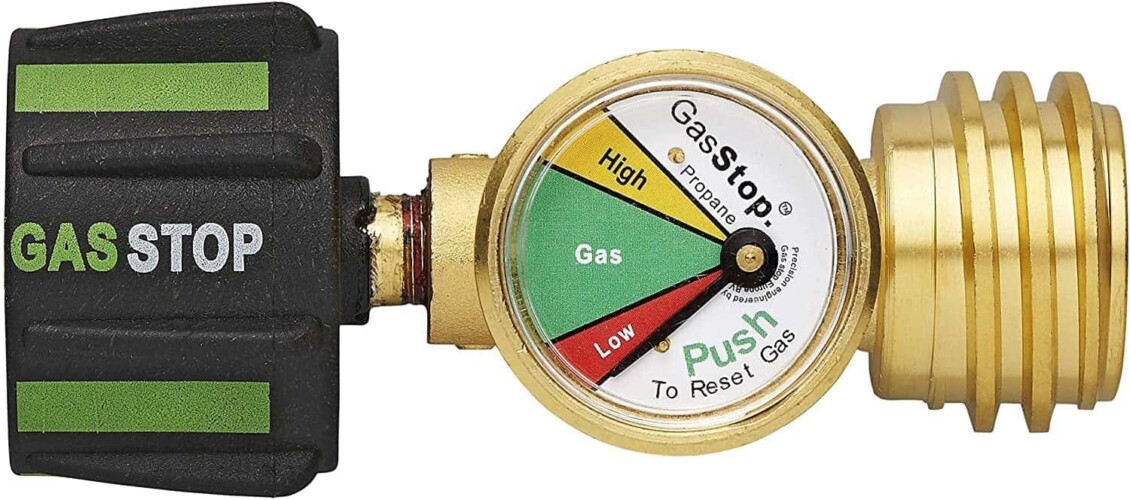
For example, let’s say you’re driving with your RV refrigerator on, and the propane line in your undercarriage gets punctured by road debris.
If you have a GasStop installed, the device immediately detects a rapid change in the gas flow rate of your propane system. Then it shuts it off to keep you and your family safe.
For under $100, you can put an end to the eternal RV debate about whether or not it’s safe to drive with propane on. The GasStop also lets know when you’re about to run out of propane.
Another bonus feature of the GasStop is the highly sensitive gas pressure indicator shows when you are low or out of propane. This is invaluable when you’re camping in cold weather.
Reflectix Insulation

Just as silver foil blanket-typ insulation added to windows and ceiling vents can keep your RV cool in summer, it can also add warmth to the RV in winter. Commonly referred to as Reflectix, it can help retain indoor warmth during cold temperatures. It comes on a roll. Just cut to the size of your RV windows and ceiling van vents. Lay it over them and you have of the most effective winter RV camping accessories.
Buddy Portable Propane Heater
I honestly don’t know how we went cold weather dry camping in winter for so many years without a portable Buddy Heater. On more than one occasion we wore down our batteries and couldn’t start our external Honda generator because it was so cold outside. I was always afraid of using propane heaters indoors, but the safety features of a Buddy heater finally sold me on giving it a try. I’m so glad I did.
Having a Mr. Buddy space heater on board means you don’t need to live with cold air inside the camper. And you also don’t need to always run your furnace to keep warm. It’s especially nice on a chilly morning when you don’t want to turn on your generator. This quiet and safe way to warm your RV uses portable propane bottles, or a line connected to your RV propane system.
This type of RV-safe propane heater runs a very slight risk of releasing too much carbon monoxide, however. When using a Buddy Heater, always crack a window. Also make sure you have a working carbon monoxide detector, LP detector, and smoke detector.
No Freeze Heated Water Hose for RVs
I hate that first hard freeze of winter. If I’m lucky enough to get a warning about freezing temperatures, I fill my freshwater tank and disconnect from the RV park water connection. It’s such a hassle! But I can avoid it and stay warm inside with a No-Freeze Water Hose. This is the one of the ultimate winter RV camping must-haves for any RVer.
Made with food-grade materials, this heated RV water hose comes in several lengths. Rated for use in temperatures down to -40 degrees Fahrenheit, just plug the heated hose into a 110 volt outlet at the utility pedestal. It stays on to prevent a frozen water hose. The material remains flexible all the way down to -20 degrees, which makes it easy to coil, put in storage, and scram at the first sign of a blizzard. The ultraviolet and fire-resistant coating means it lasts for years, too. One 25-foot hose uses about 2.5 kWh of electricity a day, and will only cost you about 25¢ a day to keep water flowing to your RV in the coldest of temperatures.
Cold weather camping doesn’t have to be miserable. Be prepared with the basics: warm wool blankets and socks, fuel in your propane tank, and heat tape for your city water connection. A snow shovel might come in handy too. Combined with the winter RV camping must-haves above, you can keep your interior living space comfortable, and enjoy you more comfort while winter RVing with the right gear at gorgeous cold weather destinations.


